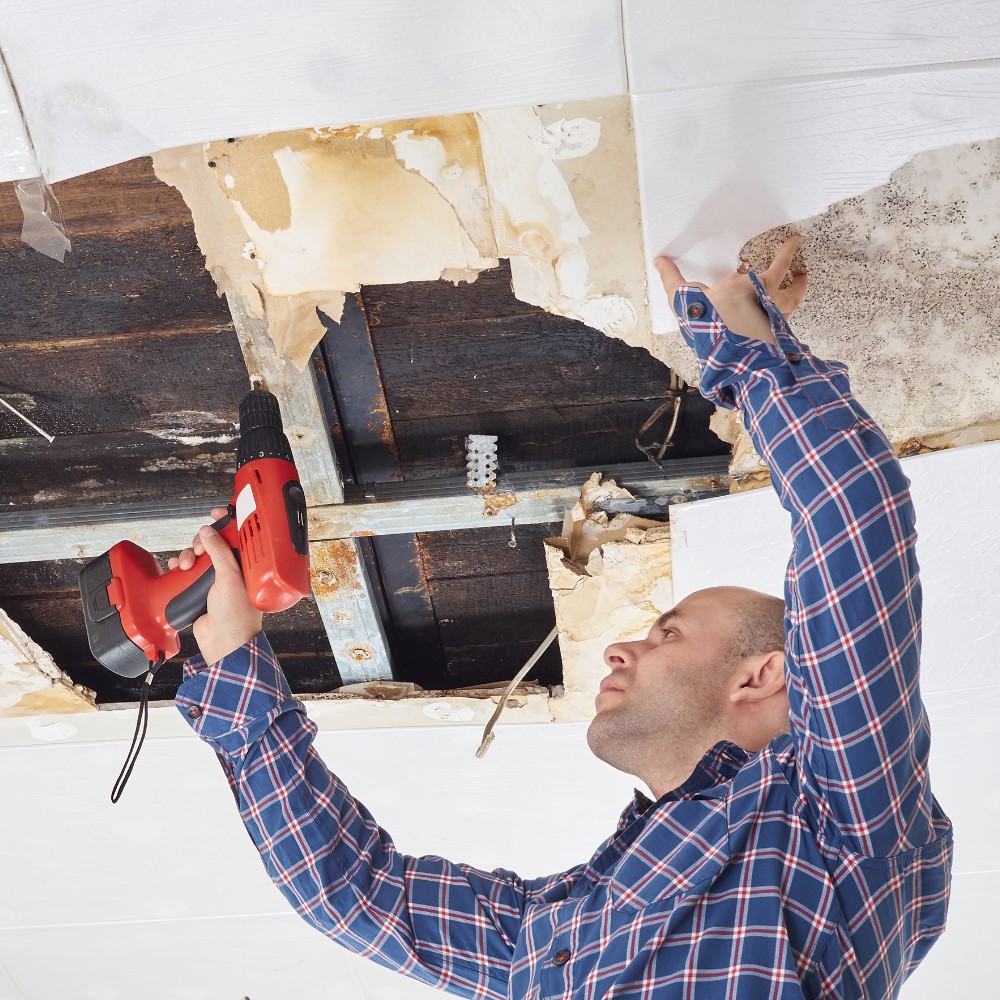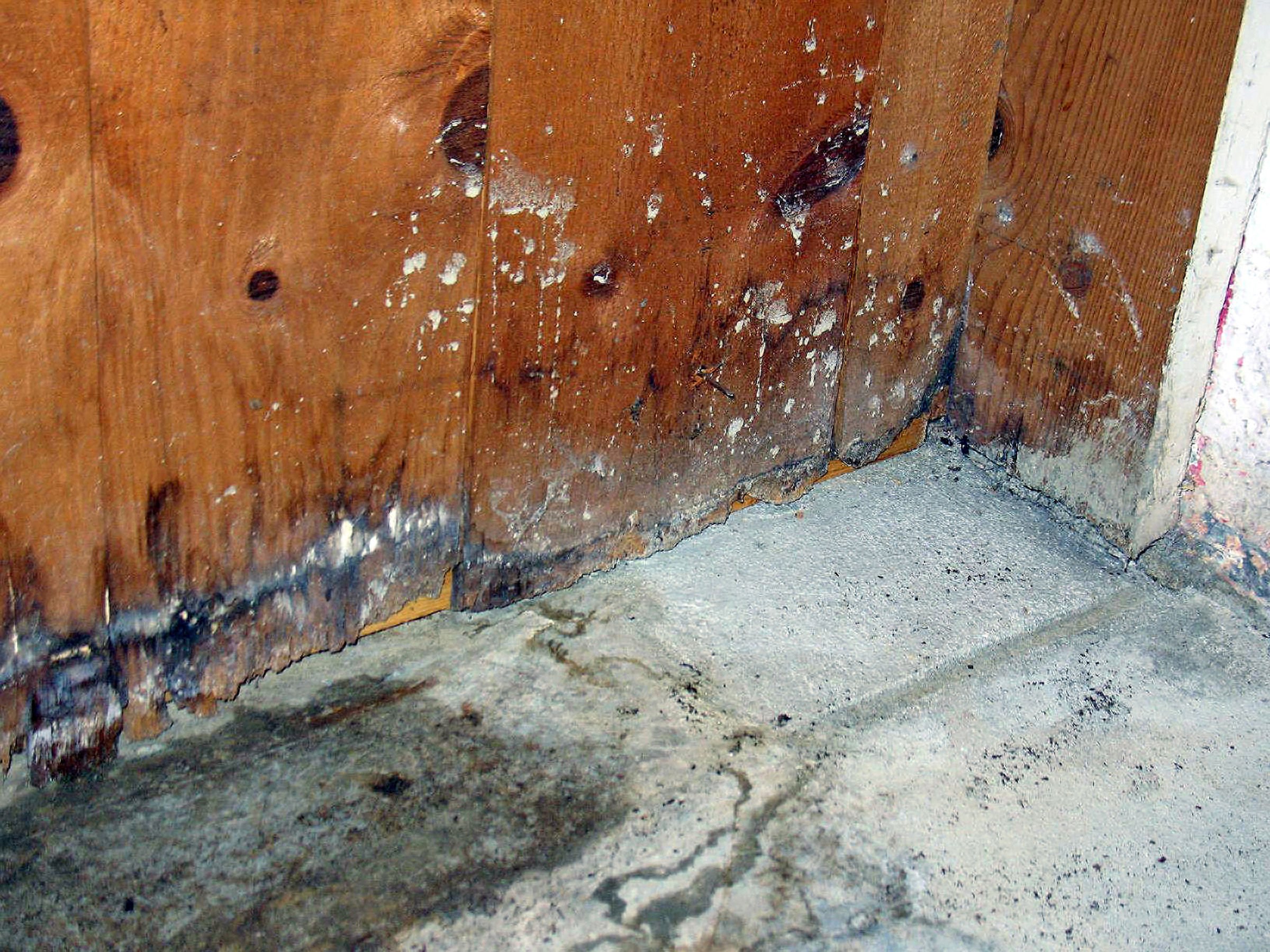Affordable Water Damage Repair Services for Every Homeowner in Need
The Refine of Water Damages Clean-up: Ensuring Your Home Is Recovered Successfully
Water damage can be a daunting obstacle for house owners, requiring a precise and organized cleaning procedure to restore safety and capability. At first, a comprehensive evaluation is essential to determine the extent of the damages and figure out the appropriate remediation actions. Following this, reliable water extraction methods play a pivotal function in mitigating additional harm. Nevertheless, the subtleties of drying, disinfecting, and eventual repair are equally necessary and frequently ignored. Understanding these phases can make a substantial difference in the result of your home's reconstruction, prompting a closer check out what each step involves.
Evaluating the Damage
Upon finding water damages, the primary step is to thoroughly examine the level of the effect. This initial analysis is critical, as it helps identify the essential steps for efficient cleaning and restoration. Begin by examining the impacted areas, including walls, ceilings, floors, and individual items, to recognize the resource of the water invasion, whether from flooding, leaks, or condensation.
Documenting the damage is important for both insurance coverage claims and planning reconstruction initiatives - damage restoration services. Use photos and written notes to record the extent of the damages, noting any affected architectural aspects and materials. Pay unique interest to areas that may not be quickly visible, such as behind wall surfaces and under carpets, as concealed wetness can result in further difficulties, consisting of mold development
In addition, evaluate the timeline of the water direct exposure. Ultimately, a thorough assessment lays the foundation for a successful water damages clean-up procedure, guaranteeing that all influenced areas are addressed successfully and thoroughly.
Water Extraction Methods

Professionals normally employ completely submersible pumps for bigger quantities of water, which can quickly relieve flooding in cellars or other affected areas. For smaller quantities, wet/dry vacuums are typically utilized to remove recurring dampness from carpets and difficult surfaces. In addition, making use of mobile extractors permits for targeted elimination in constrained rooms or locations with fragile products.
In circumstances of infected water, such as sewer or floodwater, progressed removal strategies might involve using biohazard devices to make sure safety and security and conformity with health guidelines. High-powered removal devices are critical in reducing water retention in architectural products, which can lead to mold growth and structural damage otherwise attended to immediately.
Eventually, the effectiveness of water removal strategies plays an essential function in the overall success of the water damages cleaning procedure, laying the groundwork for subsequent reconstruction initiatives.
Drying and Dehumidification
As soon as standing water has been efficiently extracted, the following essential stage in the water damage cleaning procedure is drying and dehumidification. This step is important to protect against additional damage and mold and mildew development, which can happen within 24 to two days in damp environments.
To attain reliable drying out, customized devices such as industrial-grade air movers and dehumidifiers is utilized. Air movers distribute air across wet surfaces, boosting dissipation prices, while dehumidifiers lower humidity degrees airborne, promoting a conducive setting for drying out. The mix of these tools makes certain that wetness is drawn out from floors, home furnishings, and read here wall surfaces, allowing them to dry extensively.
It is essential to check the drying procedure closely. Professionals commonly utilize moisture meters to assess the wetness web content in different products, guaranteeing that all influenced areas reach appropriate dry skin degrees. This precise strategy aids to avoid concealed dampness pockets that could result in structural damages or harmful mold and mildew growth.

Cleansing and Sterilizing
After the drying out and dehumidification stage is full, the following essential action in water damages cleaning is cleansing and disinfecting the influenced locations. This procedure is vital to avoid the development of mold and mildew, microorganisms, and various other pathogens that flourish in damp environments.
The cleaning stage typically includes eliminating any type of debris, dirt, and contaminants from surface areas utilizing specialized cleaning up agents. For hard surfaces, a mix of soap and water or industrial cleaning products is often used. Soft products, such as furniture and carpets, might need much more substantial cleaning techniques, including steam cleansing or deep extraction techniques, to ensure complete cleanliness.

Sterilizing follows cleansing, making use of EPA-approved anti-bacterials to eliminate harmful microbes. This step is crucial, particularly in locations that might have entered into contact with floodwaters or sewer, as these resources can present serious health and wellness risks.
In addition, it is essential to attend to any staying smells, which might call for the usage of odor neutralizers or innovative methods like ozone treatment. Appropriate cleansing and sterilizing not just restore the safety and hygiene of your home yet also lay the foundation for effective repair and repair work in succeeding phases of the water damage clean-up procedure.
Remediation and Fixings

Once the assessment is full, repair efforts can start. In addition, floor covering may call for comparable interest, depending on the level of water exposure.
It is essential to involve knowledgeable repair professionals throughout this procedure, as they possess the competence to deal with intricate repair services efficiently. They can help minimize prospective future issues, such as mold development or structural instability, hence ensuring a risk-free and habitable living environment. Inevitably, effective repair and fixings recover the home's integrity and boost its overall value.
Verdict
In conclusion, the procedure of water damages clean-up is critical for bring back a home to its pre-damage problem. Each phase, from examining the damage to executing reliable water extraction methods, adhered to by extensive drying out, sterilizing, and essential repairs, plays a crucial role in making certain safety and conformity with building requirements. Reliable execution of these actions not just alleviates immediate damages but additionally boosts the long-lasting honesty and value of the home.
Water damages can be a difficult challenge for house owners, demanding a careful and structured cleanup process to restore security and performance. Ultimately, a detailed assessment their explanation lays the groundwork for a successful water damage clean-up process, making sure that all influenced locations are resolved effectively and extensively.
Reliable water extraction techniques are essential in minimizing damages and protecting against additional issues following a water breach event.In conclusion, the procedure of water damages clean-up is crucial for restoring a home to its pre-damage problem. Each phase, from assessing the damage to carrying out effective water extraction methods, adhered to by complete drying out, sterilizing, and needed repair work, plays a necessary duty in making certain safety and compliance with structure standards.